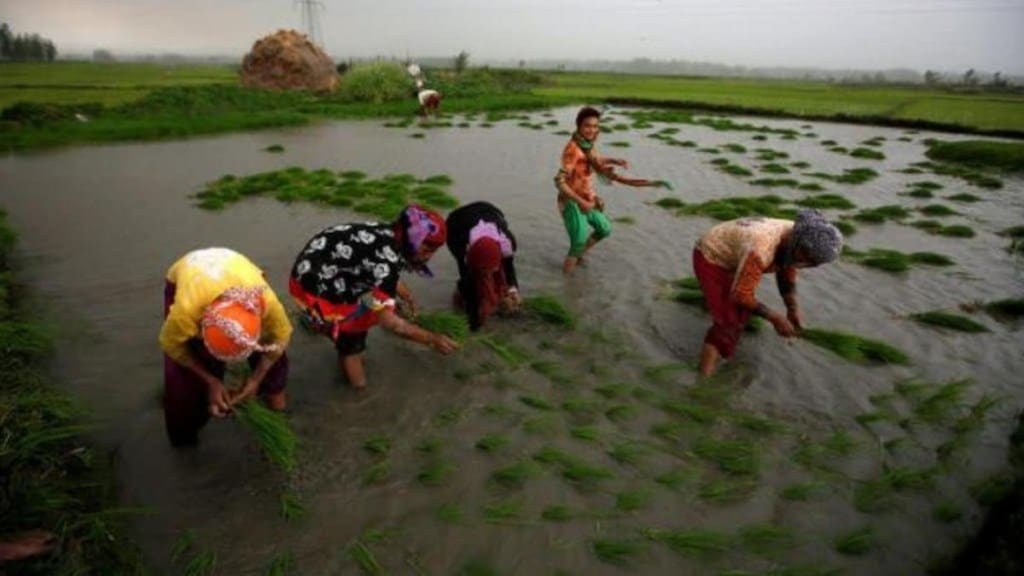Despite heavy rains impacting paddy and pulses crops in parts of Punjab, Rajasthan and Telangana, overall output of kharif crops – paddy, pulses, oilseeds – would not be lower than last year’s level because of higher sowing this year, a senior official said on Monday.
“Overall the position is that the loss of crop will be there, but there would not be major impact on productivity,” Devesh Chaturvedi, secretary,department of agriculture and farmers’ welfare, told FE at the sideline of the national conference on agriculture plan and strategize for the upcoming winter or rabi crops.
Chaturvedi said prospects of a bumper kharif crop production as expected earlier would not happen, but the output would not be less than previous year as higher sown areas. “Wherever there is adequate rainfall, in those areas, the crop conditions are robust,” he said.
The kharif output of foodgrains production – paddy, pulses, coarse cereals was 168 million tonne (MT) in the 2024-25 crop year (July-June) against total food grains production of 353.95 MT during the year.
Digital Tools and Insurance Relief
Chaturvedi said for assessment of crop yield, the government will use digital satellite imagery to ascertain the losses and productivity accurately for paddy and while for the rest of the crop physical surveys will be conducted.
To mitigate farmers losses, agriculture minister Shivraj Singh Chouhan in his inaugural address to conference has called for faster settlement of compensation to farmers hit by floods under Pradhan Mantri Fasal Bima Yojana. “We need to explore the possibility of early sowing of rabi crops in those areas impacted by excessive rainfall this monsoon season,” Chouhan said.
Heavy Rains Alter Regional Outlook
Meanwhile, a report by Crisil intelligence has stated that persistent heavy rainfall through August in Punjab, Haryana, Karnataka, Andhra Pradesh, and Telangana have impacted several kharif crops such as paddy, cotton, bajra, cotton, maize and gram.
“Punjab and Rajasthan are staring at major crop losses after heavy rains while the impact of surplus rainfall is localised in other states”, Crisil stated in its report last week.
Added by surplus rainfall this season, the sowing of kharif crops – paddy, pulses, oilseed, sugarcane and cotton – has completed with total area under these crops has crossed 111.08 million hectare (mha), 2.5% higher than normal sown area of 109.6 mha. Earlier there was an expectation of bumper crop output because of the higher area.
However, hugely surplus rainfall of 31.6% over the benchmark long period average has resulted in floods in Punjab, Rajasthan and other states which is likely to hit kharif crops yield.
According to the India Meteorological Department, rainfall between June 1 and September 15 in the current monsoon season stood at 853 mm, which is 107.2% above the benchmark – long period average (LPA).
In terms of regional variations, northwest (31.6%), central India (10.5%) and south peninsula (7.2%) have received surplus rainfall over the benchmark, while east and north-eastern regions have experienced deficit rainfall of 19.1% against the benchmark.0
Rainfall in June, July and August was 109%, 105% and 105% of the LPA, respectively. The IMD forecast ‘above normal’ rainfall at 106% of the LPA during the June-September period.

